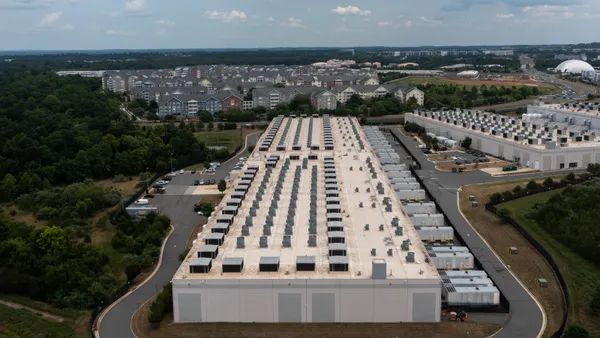Dive Brief:
- OSHA says construction defects caused electric shocks to employees and guests at the Volcano Bay water attraction at the Universal Studios Florida theme park in Orlando, according to the Orlando Sentinel. OSHA has closed its inspection of the issue. Universal will not be fined for the June incident, which did not result in serious injuries.
- The agency said the electrical shocks were a result of a grounding rod mistakenly being driven through an electrical conduit during the park's construction. This damaged the electrical wiring and allowed an electric current to travel through the ground, reaching wet ground surfaces and water in several park areas. A second construction defect was identified as a damaged connector inside a junction box, which caused a short. The contractor responsible for the defects has not been identified.
- One Universal employee told OSHA that he measured 20- to 30-volt readings at sidewalks and at the edges of park property on the day of the incident and felt the readings were serious enough to close the park.
Dive Insight:
Universal officials told the Sentinel that all electrical issues have been resolved and that the park is safe. Electrical engineer Lanny Floyd told the news outlet that, over time, underground corrosion and the degradation of installed components could potentially reveal additional, as-of-yet unidentified defects.
But Universal and other companies that were involved in the construction still might face legal issues, according to one legal expert. OSHA has cleared Universal, but individuals who experienced electric shocks could sue the theme park.
"When you get into the area of injury, then you're going to fall under tort law, which is going to trigger insurance coverage," said attorney Quinn Murphy, with Sandberg Phoenix & Von Gontard PC in St. Louis.
Plaintiffs usually go after the owner, which is most likely to have the deepest pockets. But every firm that took part in the construction and had an obligation to make sure that the end product was built correctly is at risk.
"OSHA standards are not [necessarily] the threshold of negligence," Murphy said. "Sometimes the standard is higher."
Many people might think that the electrical subcontractor in a situation like this is to blame for negligently performing its work, but Murphy said the defect could come down to an incorrect sequencing of tasks or even a design issue. All contractors could have done what they were supposed to do, but some factor or factors could have led to a dangerous condition, he added.
"That's why personal injury cases involve all the parties," he said.
That was certainly the case after the Florida International University pedestrian bridge collapse last year. Six people were killed and several others injured. The victims' families and survivors sued several contractors and other project stakeholders, and their insurance companies, for the most part, have settled the claims.
The National Transportation Safety Board found that design errors on the part of FIGG Bridge Engineers Inc. probably caused the collapse. It faulted several contractors that were part of the construction team for not shutting down the flow of traffic under the bridge when the severity of cracking in the bridge structure became apparent.
As for electrical injuries, they are some of the most dangerous for construction workers and the general public alike. Electrocutions are one of OSHA’s “Fatal Four,” the moniker given to the deadliest type of accidents for construction workers. Last year, the agency fined Pennsylvania contractor Insight Pipe Contracting LLC more than $330,000 after one of the company’s employees was electrocuted on the job and died. Insight is contesting those citations.
And a seven-year-old girl is still recovering after she was electrocuted in June 2018 while swinging from an outdoor handrail at the $1.4 billion MGM National Harbor in Prince George's County, Maryland. A subsequent investigation revealed faulty wiring.














